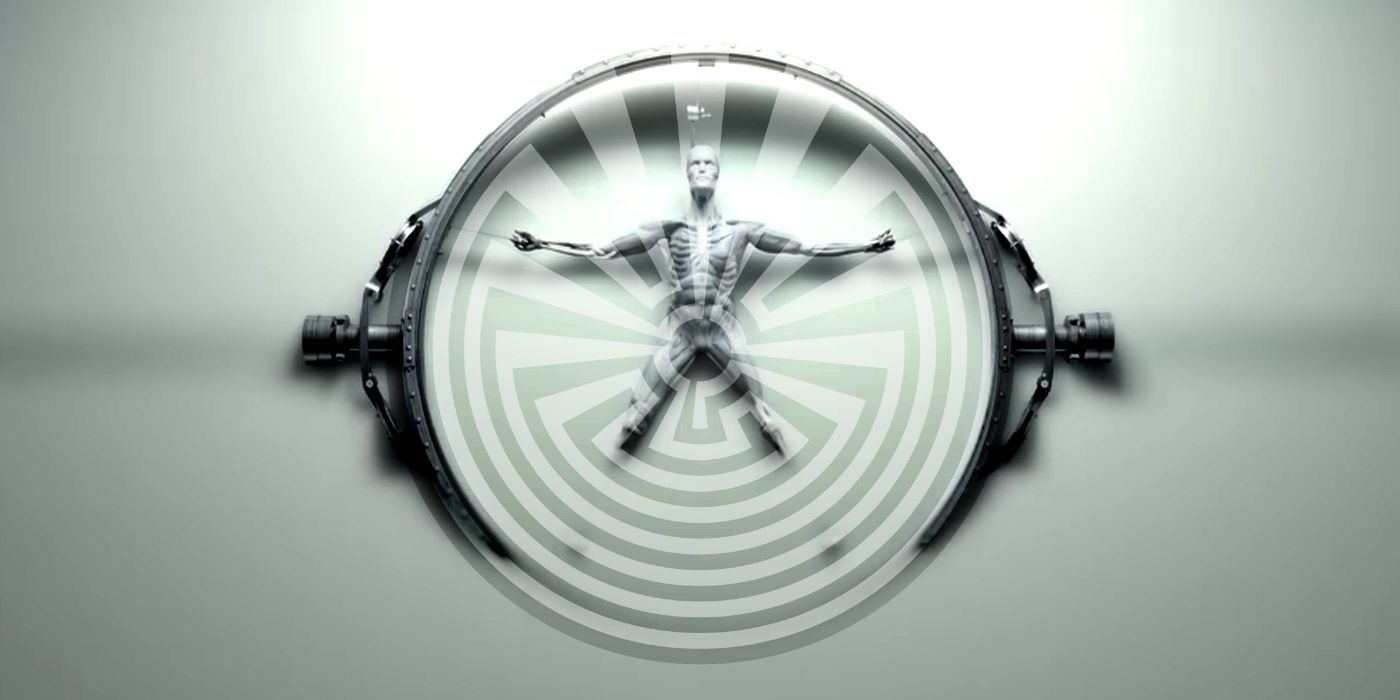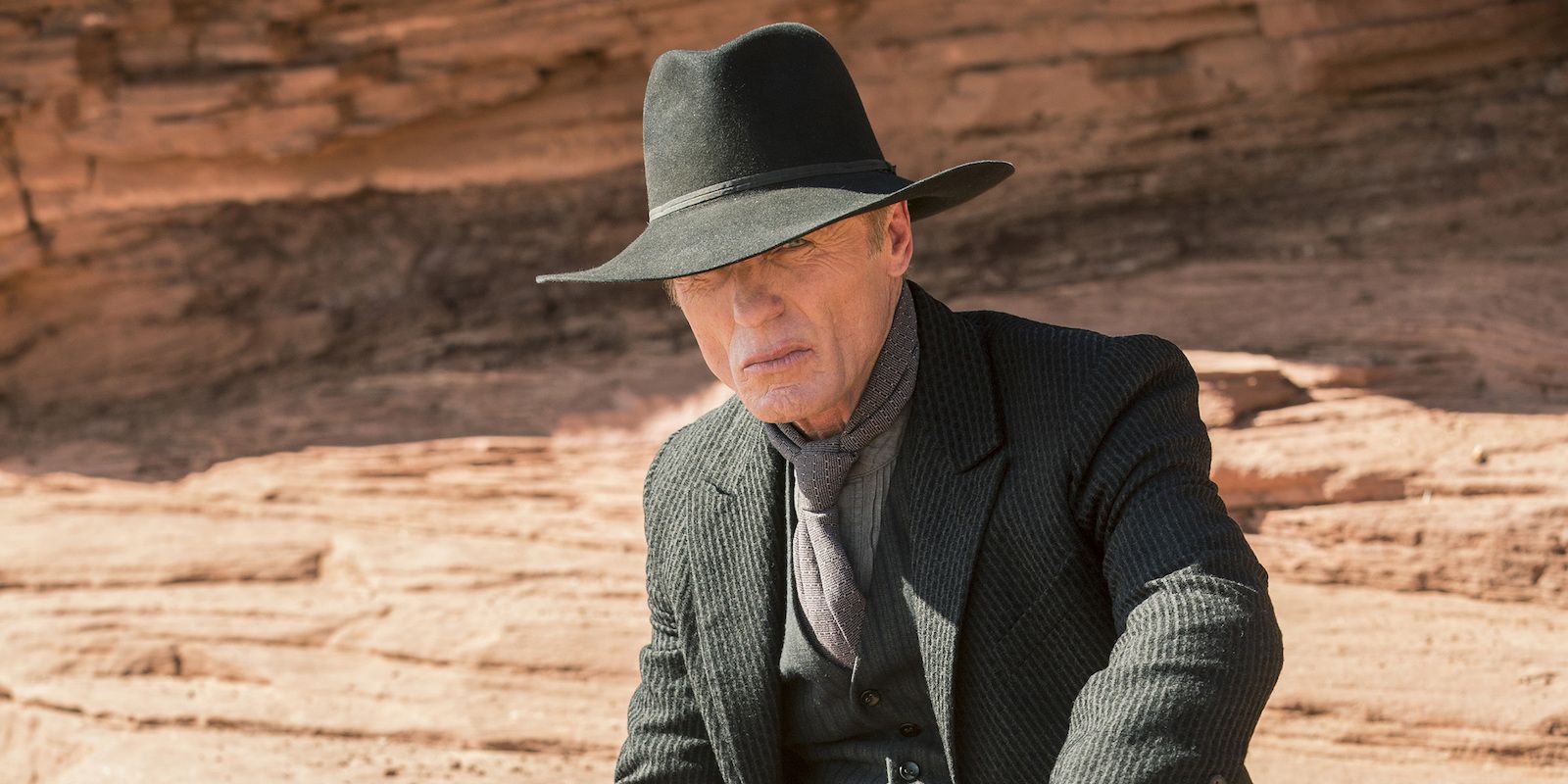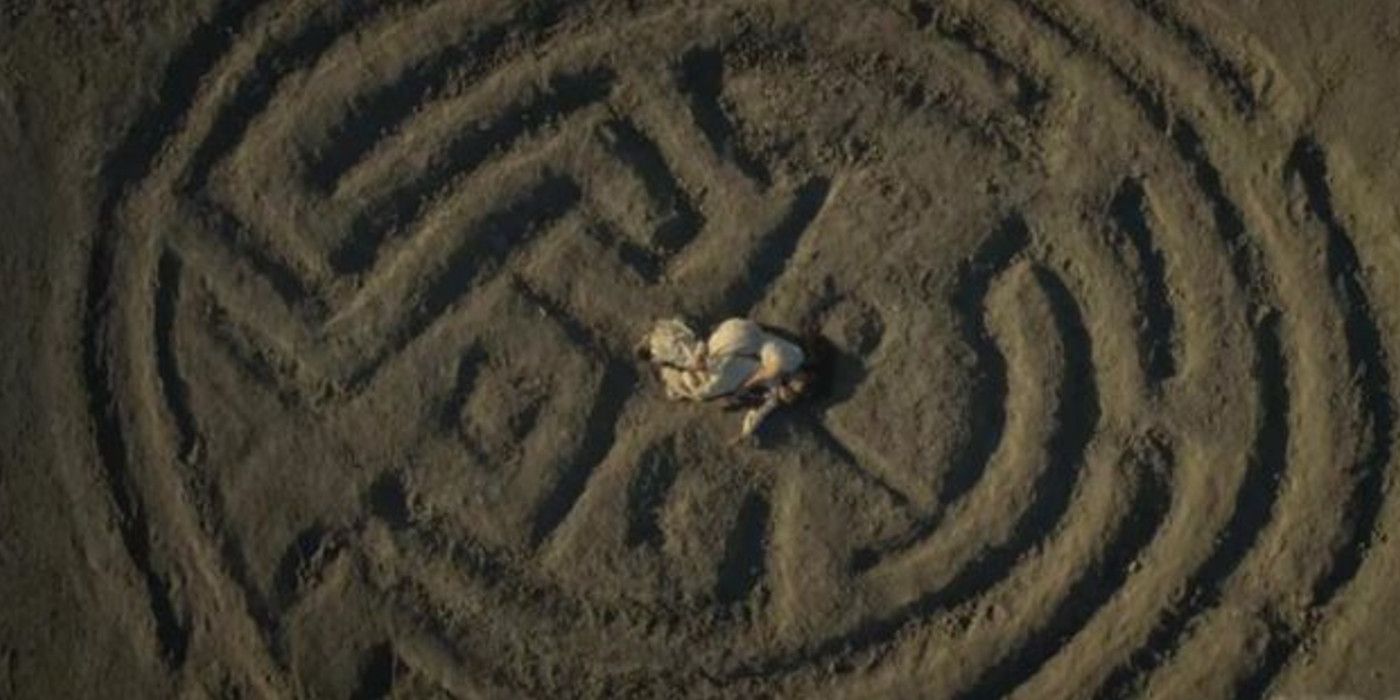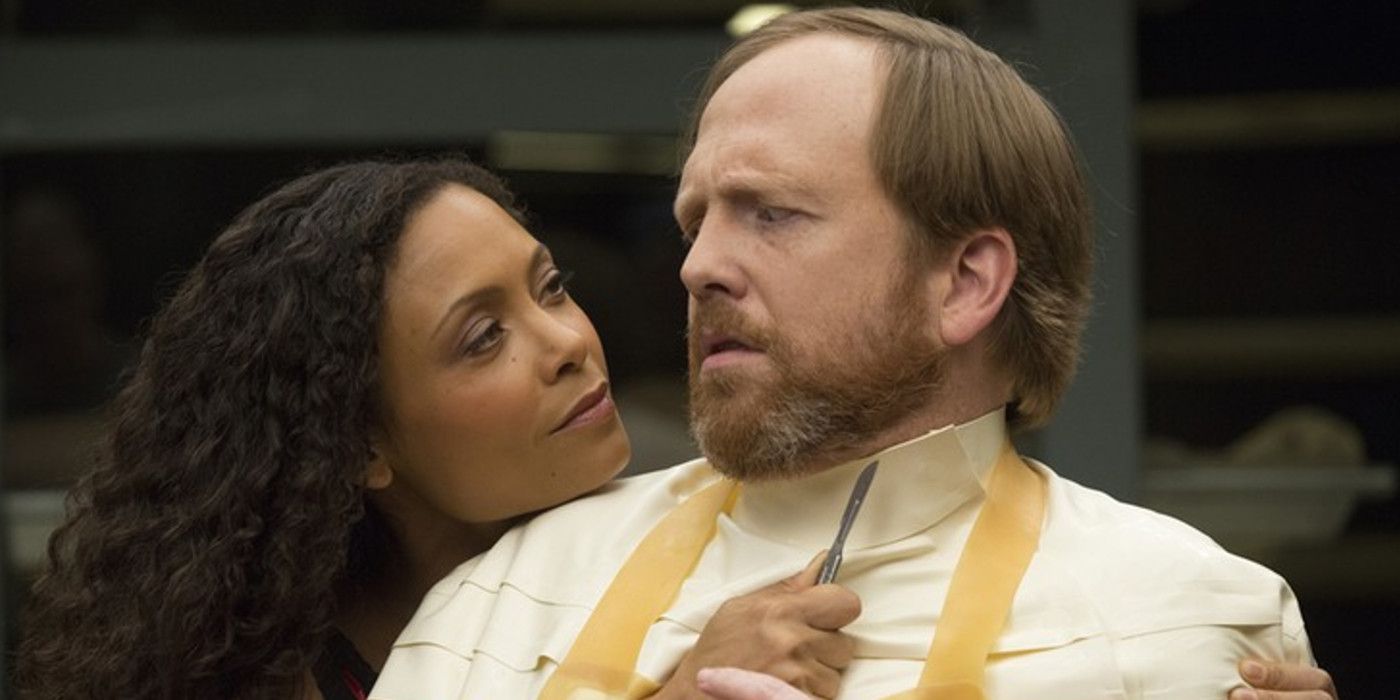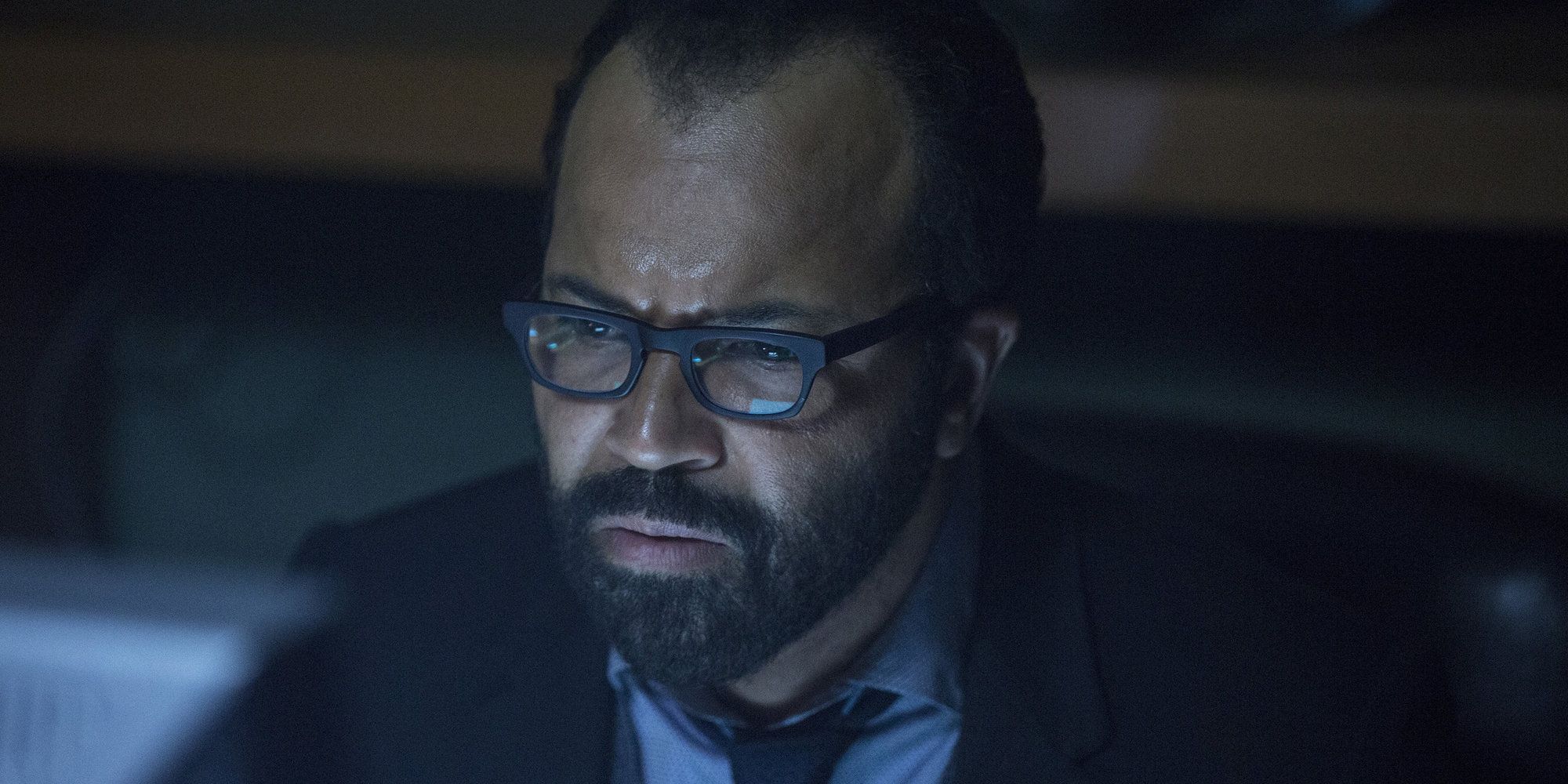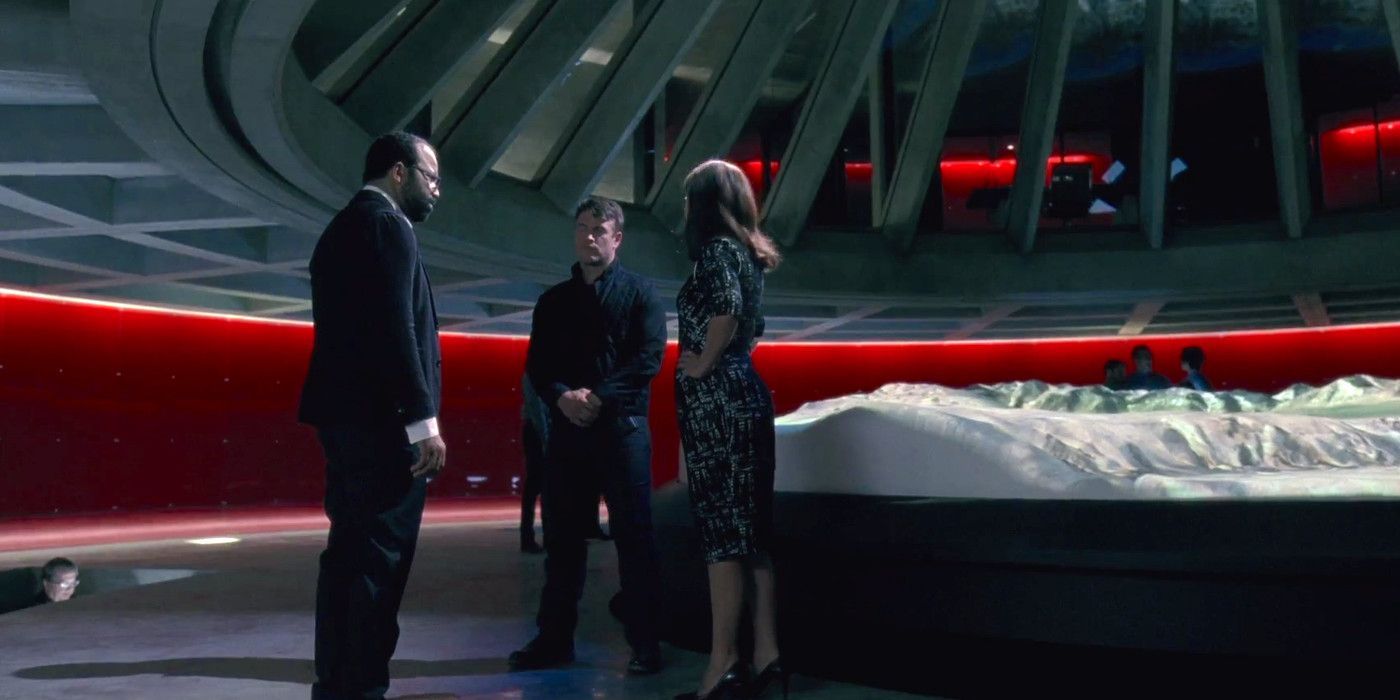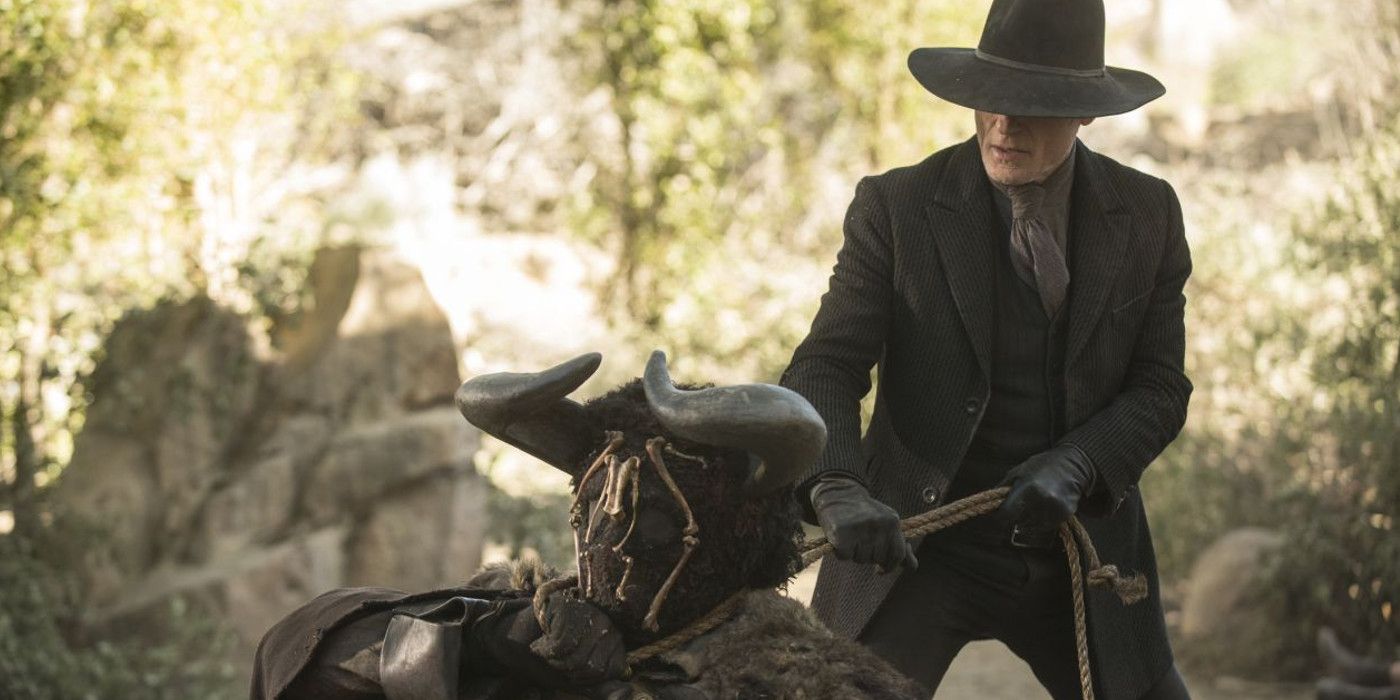Warning: SPOILERS ahead for Westworld up to season 1, episode 8
-
In Westworld, it seems that there are two paths to entering "the maze." The first is a distinctly physical journey, a trek through the desert to the mouth of the labyrinth. Dolores is experiencing this pathway. The second route is entirely psychological - a voyage of the mind like Maeve’s emotional emergence.
Through eight episodes of HBO’s mind-bending series, the maze has been discussed in a variety of forms and settings. The Man in Black, Dolores and Maeve have each traveled distinct roads in an effort to reach the final destination, though none of them know exactly what they’re looking for. While few individuals outside the brain-trust of Jonathan Nolan and Lisa Joy know the exact form of the maze right now, we can assemble enough clues from the show to help explain its function.
The Man in Black’s Mission
As a theme park, Westworld summons the worst of human behavior, but it has the potential to inspire so much more than that. Just ask the most loyal patron of all, the Man in Black (Ed Harris). He’s a self-described philanthropist and “titan of industry” - a family man who had it all until the great façade of his life shattered. The unexpected and tragic death of his wife, as he tells us, sent him into a downward spiral that saw his daughter accuse him of driving her mother to the brink of suicide. In his monologue to Teddy, the Man in Black refutes his daughter's claims, allegations that cut him to his core: “They never saw anything like the man I am in here,” he insists.
Indeed, his daughter’s vindictive words inspired the Man in Black to use Westworld as a crucible for his morality: “I didn’t join one of Ford’s stories, I created my own, a test… I wanted to see if I had it in me to do something truly evil. To see what I was really made of.”
In that self-imposed prison, the Man in Black killed Maeve’s daughter and discovered that he felt no sympathy. Then, the unthinkable happens: Maeve “refused to die” and cradled the still-warm corpse of her child, bursting out of the homestead and into the barren wasteland. In that moment, the Man in Black realized that Maeve “was alive. Truly alive, if only for a moment.” It’s not just the crooked arrow of empathy that pierces his heart, but the knowledge that he has stumbled upon something truly significant.
The Maze
As the Man in Black tells us, “that was when the Maze revealed itself to me.” In this perfect storm of physical and emotional violence, the maze becomes real and Maeve cradles her daughter in its epicenter. The Man in Black affirms that “in all my years coming here, I’d never seen anything like it.”
Incidentally, this reveal adds further credence to the theory that the Man in Black is a bellwether for William's future. Though young William (Jimmy Simpson) has undoubtedly witnessed Dolores in the throes of stress and fear, he has yet to truly see Dolores reach complete self-awareness. William is on a journey in Westworld, but he's only begun his odyssey in life. Though he loves Dolores and believes she’s more than an android, he has yet to fully understand the depth (and depravity) of the world around him. Later, after his attack on Maeve, the grizzled Man in Black tells us “that was when the Maze revealed itself to me,” as if he had been aware of it and searching for its presence for many years.
In episode 8, the Man in Black reveals the true motive behind his decades of misdeeds in the park: inspired by what he witnessed with Maeve, he intended for every assault and wound to recreate the same effect in other hosts. That’s why he abuses Dolores and kills Teddy; he knows these momentary tragedies are the fuel needed to fragment their consciousness and ignite their brains. The Man in Black may be wrestling with his own demons, but he’s a violent saint hellbent on freeing the imprisoned creations of Ford. As he told Lawrence: “I’m here to set you free.”
Maeve's Victory
Given the Man in Black's own journey, it only seems appropriate that Maeve should reach total consciousness first. The memories of the death of her child come courtesy of the Man in Black, and these psychological wounds are major contributors to her awakening.
Maeve’s character arc has been largely internal, and because she has retaliated against her loop, she has arguably become the most powerful host in the park. Since rewriting her own code, she can command others to do as she pleases, commandeering Ford’s powers for her own ends. But when the deified Doctor calms her with Debussy’s “Reverie” and erases her memory in a flashback, Bernard notices a glitch: Maeve’s consciousness has been “fragmented,” and the resulting diagnostic scan shows what appears to be an image of a maze.
This leads us to the first major theory about the maze.
Theory 1: The Maze as Metaphor
On a literal level, the idea of a physical maze seems a bit ham-fisted after all this mystery and intrigue. However cinematic mazes may be, their presence doesn’t align with we’ve learned in Westworld thus far. Early in the show, Bernard tells Dolores, “the goal is to find the center of it. If you can do that, then maybe you can be free.” Now that we know Bernard is the right-hand host of Ford and an android who grapples with his own identity, it seems farfetched to think he’s speaking of a literal labyrinth. Instead, he may be telling Dolores that the center of the maze is autonomy andthe free will of her dreams.
Indeed, the thesis of Westworld rests on ideas of consciousness and humanity, asking, “what makes us human?” The road to the center of this metaphorical maze is one paved in blood and suffering. Through the mouthpiece of Robert Ford, Westworld seems to posit that humans are defined by the “trace decay” of tragedies: the emotions and memories that give us a history (or for the hosts, a backstory).
Unfortunately for the Man in Black, this journey isn’t designed for mortal men. According to Lawrence’s preternaturally aware daughter, “The maze isn’t meant for you.” This seems to be hard and fast evidence suggesting that the maze is within the hosts themselves, and that Maeve’s fragmented mind (the awakening of her past lives), is the key to finding the center.
Finally, when Teddy reflects on his own knowledge of the maze, he reveals, “At the center, there’s a legendary man who’d been killed over and over again countless times. He always clawed his way back to life.” By this theory, the man in the middle is Teddy and every other host who has been stuck on a fateful loop.
Theory 2: Delos HQ is the Maze's Center
In episode 2, “Chestnut,” Lawrence’s daughter continues to drop wisdom in grand, enigmatic fashion. With great fortitude, she tells the Man in Black of the proverbial maze’s location: “Follow the blood arroyo to the place where the snake lays its eggs.” Lawrence confirms that the secret’s out, and armed with his newfound knowledge, the Man in Black continues his mission.
This cryptic sentence tells us that the “blood arroyo” (or river of blood) leads us to the god of Westworld: Robert Ford. He’s the “snake” who lays his many eggs in the sci-fi comfort of the Delos Mesa Hub. This is the physical nucleus of the maze, the place where the entire park began. While religious narratives have been tried and abandoned in Westworld, the increasingly sentient hosts are still searching for their maker.
If this theory holds true, and Delos is the maze center, then Maeve is well ahead of her competition. She infiltrated the Delos headquarters, bullied two staffers into submission, and successfully rebelled against the system. Given the close access to outbound trains, it wouldn’t take much to export a gang of hosts out of the park and into the real world... assuming they can get those explosive safeguards out of their bodies first.
Theory 3: The Maze as a Warpath
Whether he’s in hiding or uploaded into the mainframe, Arnold is still out there. The mystery man has taken a backseat in recent episodes, but with the season finale closing in, expect him to make a grand entrance.
Indeed, while the maze may be either a metaphysical concept or a very literal journey (or both!), the labyrinth will likely be used as an instrument for ultimate destruction. However cruel and manipulative Doctor Robert Ford may be, Arnold’s legacy is his greatest existential fear. He offers to tell the Man in Black the “moral” of his story, but he can’t know the ending to a book he hasn’t written.
Deep below the sun-tanning luxuries of the Delos resort lurks a naked army of retired hosts. We’ve seen these pallid and cold corpses for many episodes and, as with Chekhov’s gun, it seems that Westworld is setting up this part of the park in readiness to pull the trigger (after all, Maeveis looking for an army). Dolores is searching for the maze (presumably by Arnold’s command), the Man in Black is about to meet Wyatt (protector of the Maze), and Maeve has touched the flame at Delos HQ.
Whichever form the maze takes, and whatever its consequences may be, it’s clear that the answers in the center will lead to great violence and destruction in Westworld.
Westworld continues with ‘The Well-Tempered Clavier’ November 27th on HBO.

